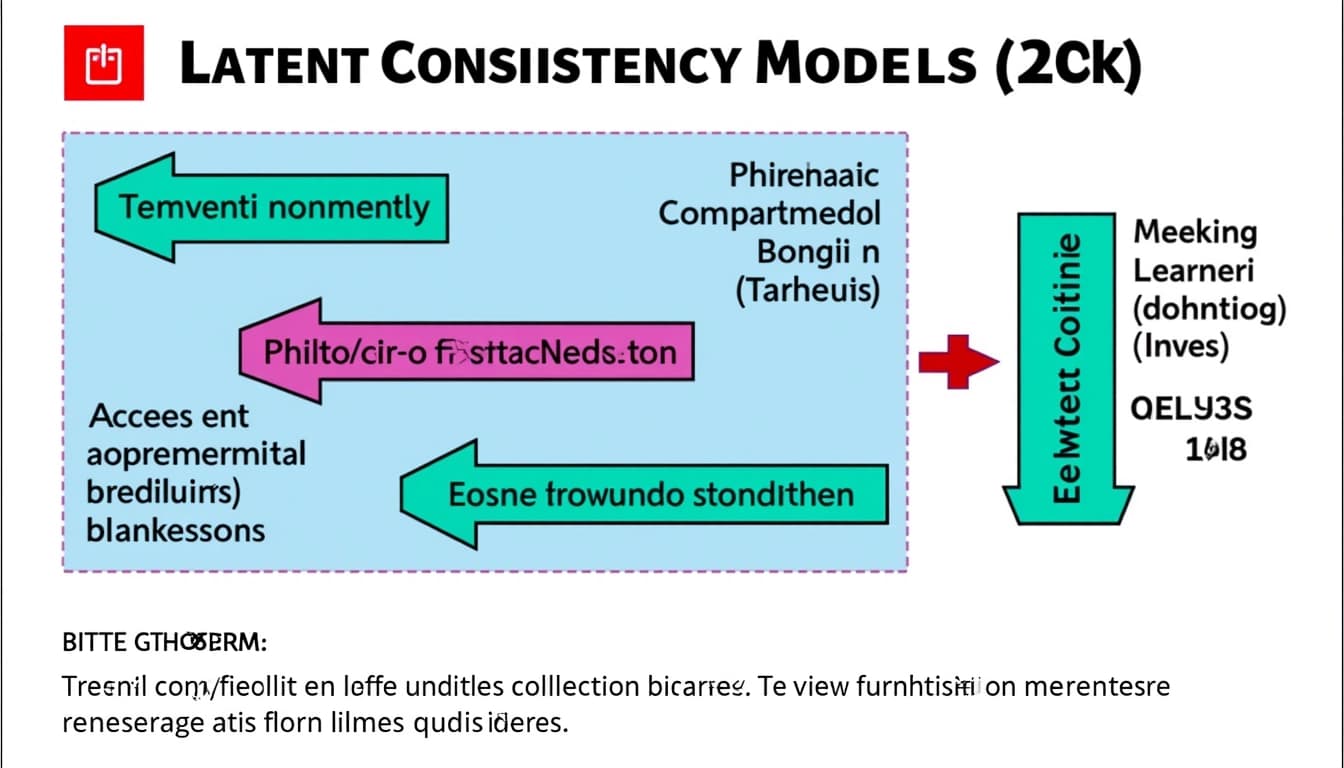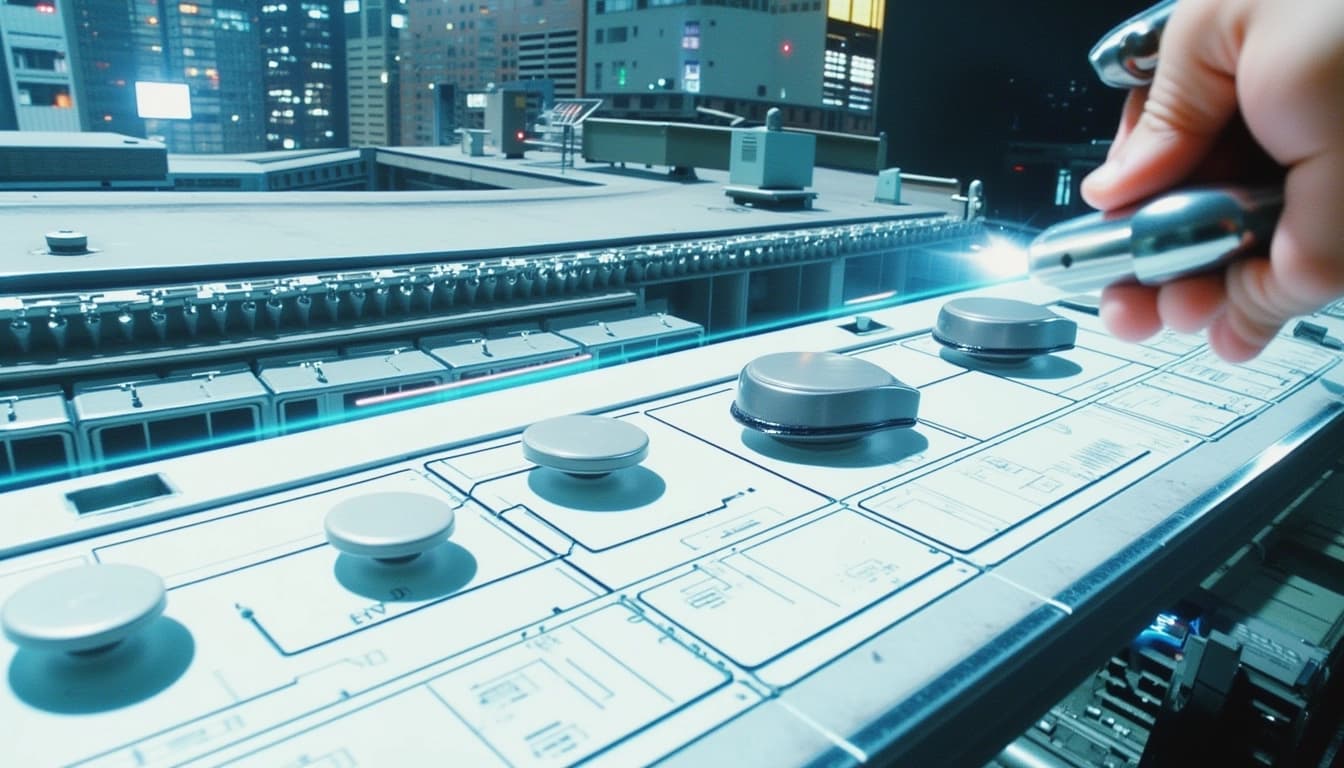
Key Points on Latent Consistency Models (LCMs)
By John Doe 5 min
Key Points
Research suggests Latent Consistency Models (LCMs) significantly speed up image generation, reducing steps from 20-30 to 2-4, while maintaining high quality.
It seems likely that LCMs enhance efficiency, making real-time applications and less powerful hardware usage possible.
The evidence leans toward LCMs being flexible, distillable from pre-trained models, and fine-tunable for specific styles.
What Are LCMs and Why Are They Fast?
Latent Consistency Models (LCMs) are a new type of AI model for generating images, built on top of existing models like Stable Diffusion. They work by predicting the final image in just a few steps, rather than the many steps traditional models need. This means you can get high-quality images, like 768x768 resolution, in seconds instead of minutes, making them much faster for tasks like creating art or designing content.
How Do They Compare in Quality?
LCMs seem to produce images as good as those from slower models, with examples showing clear, detailed results in fewer steps. They’re trained to keep quality high while cutting down on the time and computer power needed, which is great for both professionals and hobbyists.
Unexpected Detail: Fine-Tuning for Custom Styles
One interesting aspect is that LCMs can be fine-tuned for specific styles, like generating images in the style of Pokémon or The Simpsons, without needing extra heavy computing. This opens up new creative possibilities, especially for niche projects.
Survey Note: Detailed Analysis of Latent Consistency Models for Fast, Clean Image Generation
Latent Consistency Models (LCMs) represent a pivotal advancement in the field of generative AI, particularly for text-to-image synthesis, by addressing the critical bottleneck of slow inference times in traditional Latent Diffusion Models (LDMs). This note provides a comprehensive exploration of LCMs, detailing their mechanism, advantages, and potential impact, based on recent research and
Diffusion models, such as Stable Diffusion, have revolutionized image generation by iteratively denoising random noise to produce high-resolution, photorealistic images. However, this process typically requires 20-30 steps, leading to slow generation times, especially on less powerful hardware. This limitation has hindered real-time applications and increased computational costs, prompting the development of more efficient alternatives.
Background and Context
LCMs, proposed in recent research, aim to overcome these challenges by enabling swift inference with minimal steps. Inspired by Consistency Models, LCMs operate in the latent space of pre-trained LDMs, directly predicting the solution of the probability flow Ordinary Differential Equation (ODE) to generate images in 2-4 steps, significantly accelerating the process.
Mechanism of LCMs
LCMs are distilled from pre-trained classifier-free guided diffusion models, such as Stable Diffusion, using a consistency distillation loss. This training ensures that the model can predict the noiseless image from any point in the diffusion process, maintaining consistency across different timesteps. The key innovation lies in operating within the latent space, a lower-dimensional representation of the image, which reduces computational complexity.
Latent Space Operation
By working in the latent space, LCMs leverage the efficiency of LDMs, where a 1024x1024 image might be represented by a vector of 100-1,000 dimensions, compared to millions of pixels. This allows for faster computations and fewer iterations.
Consistency Loss
The training involves minimizing the distance between the model's predictions of the final image from different timesteps, ensuring self-consistency. This is achieved through an L2 distance metric, balancing classifier-free guidance with a parameter ω.
Few-Step Inference
LCMs can generate high-quality 768x768 resolution images in just a few steps, making them highly efficient for real-time applications. This capability is particularly beneficial for scenarios requiring rapid image generation, such as interactive design tools or live content creation.
Practical Implementations
As of March 30, 2025, LCMs have been integrated into various platforms, including Stable Diffusion, to enhance their performance. These implementations demonstrate the potential of LCMs to reduce computational overhead while maintaining high-quality outputs, paving the way for broader adoption in the creative and tech industries.
Conclusion & Next Steps
LCMs represent a significant advancement in the field of generative models, offering a balance between speed and quality. Future research may focus on further optimizing the consistency distillation process and exploring new applications for these models in real-time systems.
- LCMs reduce generation time to 2-4 steps.
- They operate efficiently in latent space.
- Consistency loss ensures high-quality outputs.
Latent Consistency Models (LCMs) represent a significant leap forward in the field of image generation, offering a faster and more efficient alternative to traditional diffusion models. By focusing on the latent space and leveraging a novel approach to consistency, LCMs can generate high-quality images in just a few steps, drastically reducing the computational overhead.
Understanding Latent Consistency Models
LCMs operate by predicting the latent space representation of an image directly, bypassing the iterative refinement process typical of diffusion models. This direct prediction allows for rapid generation, often in 2-4 steps, compared to the 20-30 steps required by traditional methods. The efficiency of LCMs is further enhanced by techniques like skipping timesteps during training, which simplifies the learning process by focusing on larger noise intervals.
Training and Fine-Tuning Efficiency
Training an LCM is remarkably efficient, requiring around 32 A100 GPU hours for a high-quality model. This is achieved through distillation from existing models like Dreamshaper-V7, completed in about 4,000 iterations. Additionally, Latent Consistency Fine-Tuning (LCF) allows for fine-tuning on custom datasets without needing a teacher diffusion model, enabling specialized applications such as generating images in specific styles like Pokémon or The Simpsons in just 4 steps.
Advantages of Latent Consistency Models
LCMs offer several key benefits, including significantly faster inference times, reduced computational resource demands, and maintained high image quality. For example, generating 1024x1024-pixel images can be done in less than a second on an H100 GPU, compared to 2-4 seconds with traditional methods. This makes LCMs accessible even on less powerful hardware, such as M1 or M2 Macs, where they can produce 512x512 images at a rate of one per second.
Impact and Future Directions
The introduction of LCMs marks a pivotal moment in image generation technology, enabling real-time applications and reducing costs for cloud-based services. Research indicates that LCMs maintain state-of-the-art performance, with evaluations on datasets like LAION-5B-Aesthetics showcasing their capability to produce detailed, photorealistic results with minimal steps.

Conclusion & Next Steps
Latent Consistency Models are set to revolutionize the field of image generation by combining speed, efficiency, and quality. Future research will likely explore further optimizations and applications, expanding their use across various industries. The ability to generate high-quality images in real-time opens up new possibilities for creative and practical applications.
- Reduced inference time from 20-30 steps to 2-4 steps
- Lower computational resource requirements
- High-quality image generation comparable to traditional methods
- Accessibility on less powerful hardware
Latent Consistency Models (LCMs) represent a significant advancement in the field of image generation, offering a faster and more efficient alternative to traditional diffusion models. By leveraging latent space and distillation techniques, LCMs can generate high-quality images in just a few steps, making them ideal for real-time applications. This breakthrough addresses one of the major limitations of diffusion models—their slow iterative process—while maintaining comparable image quality.
Key Advantages of LCMs
LCMs excel in speed and efficiency, capable of producing images in as few as 4 steps, a stark contrast to the 25-50 steps required by traditional diffusion models. This efficiency is achieved through latent consistency distillation, which simplifies the denoising process. Additionally, LCMs are highly versatile, as they can be distilled from various pre-trained models like Stable Diffusion v1.5, SDXL, and SSD-1B, and fine-tuned for specific styles or applications.
Applications in Interactive Tools
The reduced computational overhead of LCMs opens up new possibilities for interactive applications. For instance, live image editing and dynamic content creation become more feasible, as users can see near-instant results. This is particularly valuable in creative industries where rapid iteration and real-time feedback are essential.
Comparative Analysis with Diffusion Models
Unlike traditional diffusion models, which iteratively remove noise from an image, LCMs learn to map noisy images directly to clean outputs in the latent space. This approach eliminates the need for multiple denoising steps, significantly speeding up the process. Practical comparisons show that LCMs achieve similar quality in 4 steps as Stable Diffusion does in 25-50 steps, as demonstrated in implementations on platforms like Hugging Face.
Limitations and Considerations
Despite their advantages, LCMs have some limitations. They do not effectively support negative prompts, as the guidance embedding approach does not double the batch size for classifier-free guidance. The guidance scale range is also narrower, typically [3., 13.], which may limit user control. Additionally, LCMs depend on the quality of the pre-trained LDM they are distilled from, potentially inheriting biases or limitations from the original model.
Practical Implementation and Community Engagement
LCMs are supported in libraries like Diffusers by Hugging Face, making them accessible to a wide range of users. The community has embraced these models for their speed and efficiency, with many experimenting with fine-tuning and applying them to various creative and professional use cases. The initial training costs, while significant, are offset by the reduced computational demands during inference.
Conclusion & Next Steps
LCMs mark a transformative step in image generation, combining speed, efficiency, and versatility. Their ability to produce high-quality images in minimal steps makes them a game-changer for real-time applications. Future developments may focus on expanding their capabilities, such as improving support for negative prompts and broadening the guidance scale range, to further enhance their utility.
- LCMs generate images in 4 steps vs. 25-50 for traditional models
- They can be distilled from various pre-trained models like Stable Diffusion
- LCMs are ideal for interactive applications due to their speed
- Limitations include lack of negative prompt support and narrower guidance scale
Latent Consistency Models (LCMs) represent a significant leap in generative AI, enabling high-quality image synthesis in just 2-4 steps, a stark contrast to traditional diffusion models requiring 20-30 steps. This innovation stems from the concept of consistency models, which predict the solution of a differential equation directly in latent space, bypassing iterative refinement. The result is a dramatic reduction in inference time without compromising image quality, making LCMs ideal for real-time applications.
Technical Foundations of LCMs
LCMs build upon diffusion models but introduce a novel training approach called Consistency Distillation. This method distills a pre-trained diffusion model into a faster, consistency-based model by enforcing that all points along a trajectory map to the same initial point. The process involves a consistency function, trained to ensure that the output remains consistent across different noise levels. This approach significantly reduces the computational overhead while maintaining the ability to generate high-resolution images, such as 768x768 or even 1024x1024 pixels.
Consistency Distillation Process
The distillation process involves training the model to predict the denoised image directly from a noisy input, skipping the iterative denoising steps. This is achieved by minimizing the difference between the model's predictions at different noise levels, ensuring consistency. The training typically requires about 32 hours on an A100 GPU, a fraction of the time needed for traditional diffusion models. Once trained, LCMs can generate images in under a second on high-end hardware like the H100 GPU.
Practical Applications and Community Adoption
LCMs have been widely adopted in the AI community, with implementations available for popular models like Stable Diffusion XL (SD-XL) and SSD-1B. Platforms like GitHub host numerous resources, including training scripts and LoRA adapters, enabling users to fine-tune models for specific tasks. For instance, LCMs can be run locally on Macs, generating 512x512 images in real-time, making them accessible to a broader audience.

Future Outlook
As of 2025, LCMs are expected to drive further innovations in generative AI, particularly in real-time applications and training-free acceleration. Their ability to balance speed, quality, and efficiency positions them as a key technology for future developments. Ongoing research focuses on enhancing their capabilities, such as supporting negative prompts and improving fine-tuning for niche datasets like Pokémon or Simpsons styles.

- LCMs reduce inference steps to 2-4, compared to 20-30 in traditional models.
- Training time is significantly shorter, around 32 hours on an A100 GPU.
- Real-time image generation is possible on consumer hardware like M1/M2 Macs.
Latent Consistency Models (LCMs) represent a significant advancement in the field of image generation, offering a faster and more efficient alternative to traditional diffusion models. By leveraging a unique approach that combines the benefits of both latent space processing and consistency models, LCMs enable high-quality image synthesis with significantly fewer computational steps. This breakthrough has the potential to democratize access to advanced image generation tools, making them more accessible to a broader range of users and devices.
Understanding Latent Consistency Models
Latent Consistency Models operate by mapping the complex process of image generation into a latent space, where the data is more compact and easier to manipulate. This allows the model to maintain consistency across different steps of the generation process, ensuring that the final output remains coherent and high-quality. Unlike traditional diffusion models that require hundreds or even thousands of steps to produce an image, LCMs can achieve similar or better results in just a few steps, drastically reducing the time and computational resources needed.
Key Advantages of LCMs
One of the most notable advantages of Latent Consistency Models is their ability to generate high-resolution images with minimal computational overhead. This efficiency is achieved through the model's inherent design, which focuses on maintaining consistency in the latent space rather than iteratively refining the image in pixel space. Additionally, LCMs are highly scalable and can be adapted to various tasks beyond image generation, such as video synthesis and 3D modeling, further expanding their potential applications.
Applications and Impact

Future Directions and Challenges
While Latent Consistency Models offer numerous benefits, there are still challenges to address, such as improving their robustness across diverse datasets and ensuring they can handle complex, real-world scenarios. Future research may focus on enhancing the model's ability to generalize across different domains and integrating it with other advanced techniques, such as reinforcement learning or adversarial training, to further push the boundaries of what's possible in image generation.
Conclusion & Next Steps
Latent Consistency Models represent a transformative step forward in the field of generative AI, offering a faster, more efficient, and more accessible way to create high-quality images. As the technology continues to evolve, it will be exciting to see how LCMs are adopted and adapted across various industries, from entertainment and design to healthcare and education. The next steps involve refining the models, exploring new applications, and ensuring they can be used ethically and responsibly.

- Reduced computational requirements for high-quality image generation
- Potential applications in video synthesis and 3D modeling
- Challenges in robustness and generalization across diverse datasets